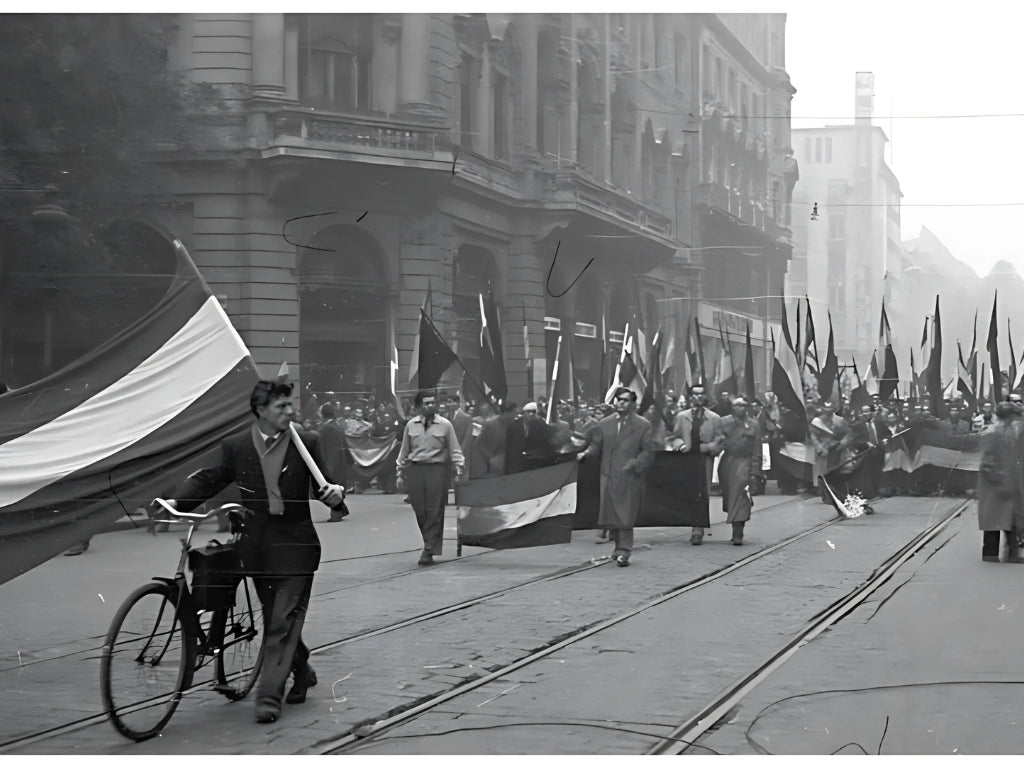By Leone Belotti
Today, on the 65th anniversary of the Hungarian uprising, the 2022 Giro d'Italia is being presented. There is talk of TV rights, of time trials that are too short, of transfers. Luckily, our deputies from Rosti Bar are here to remind us that there were times when the "escape" by bike was not a sporting spectacle.

November 1956, message broadcast by Hungarian radio: "This is Prime Minister Imre Nagy. Today at dawn Soviet troops attacked our capital with the intention of overthrowing the legal and democratic government of Hungary. I am communicating this fact to the people of our country and to the entire world."
Bicycles and tanks
In less than a week, Soviet tanks won the battle against students and workers on bicycles. The reporter Fossati and the photographer De Biase were the only two foreign journalists who documented the uprising. There were 3,000 deaths and 250,000 exiles who fled by any means. In the following years, over 1,200 people were sentenced to death by the pro-Soviet government, including former Prime Minister Nagy.

Italy-Hungary
In Italy, the events in Hungary created an irreparable rift between the two major parties of the left, socialists and communists. This event led to the paralysis of Italian political life for the next 30 years, monopolized by the Christian Democrats. The images of the rebels on bikes in 1956 in Budapest marked the end of democracy not only in Hungary, so we shouldn't forget them so easily.


